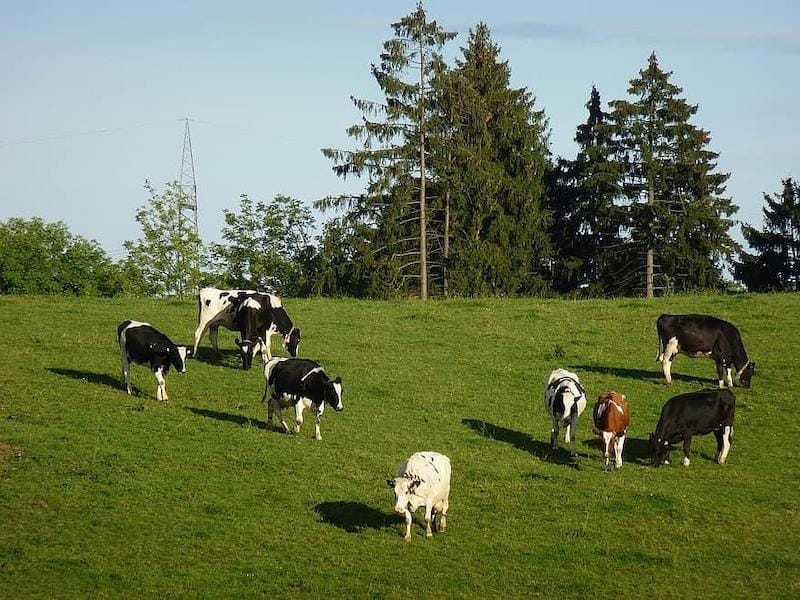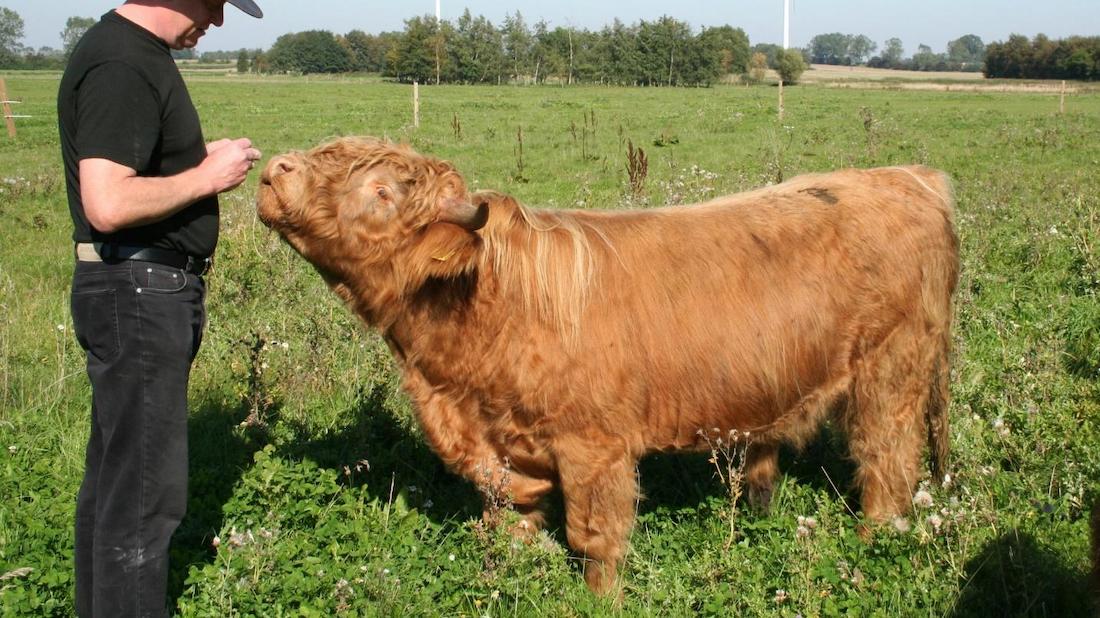Just like how we make sure our kids are getting their nutrition, many a time sneaking spinach into their soups and pizzas, as a farmer, we know you try your best to make sure your cows eat healthy too.
If you’re practising rotational grazing, you know that it’s not just about keeping your pastures thriving, and then letting your cows loose on your grasslands. It’s about slicing and dicing your precious pastures and pointing your cows in the right direction, towards the most nutritious forage.
So if you’re following rotational grazing practices, congratulations, you’re already on the right track towards getting the most out of your cows. Today, I’m going to tell you about yet another form of rotational grazing called intensive rotational grazing.
Intensive rotational grazing is a system that divides up large grasslands into smaller paddocks. So, animals are shifted from a paddock more frequently, based on herbage data.
In turn, this allows you higher pasture and productivity per hectare. It also helps in better control of weeds, ensures even distribution of manure, keeps your soil ultra-healthy and allows paddocks to rest and rejuvenate to their full potential.
Of course, all these amazing benefits also requires a bit more from you. It does require a keen eye, constant monitoring of pasture growth rates and some additional investments at the beginning for fencing and water distribution. But we’re going to tell you exactly why it is worth it!
Let the animals do all the work
Did you know that if you’re able to chalk out a proper plan, divvy up your paddocks in the right way, get your fence layouts and water distribution systems in order, you can then, for the most part, sit back and let your animals do the work?
The more they graze, the less you have to feed them. Remember, if there’s more green on your land, there’s going to be more green in your pocket!
Save the environment
Managed grazing, apart from doing wonders for your farm, is also super-beneficial for the environment!
- Since the soils get better at holding water, there is less rain runoff
- The water quality improves a lot since the forages trap nutrients and sediment
- Manure is spread more evenly across paddocks and animal waste is distributed
- Lesser soil erosion and irrigation needs
Health of livestock
Cows are meant to be on pasture, aren’t they? Well, that’s their home, and that’s where they are the happiest!
Happy cows mean fewer health problems. Cows in intensive rotational grazing programs are likelier to have:
- Lesser foot and hoof problems because of all that time spent walking
- Increased calving percentage and improved health
- Somatic cell counts are lesser
- Lesser parasite problems
- Fly problems are lesser

Better relationships between farmers and their cows
After the first few moves, the animals quickly get used to this way of life and adjust immediately. Graziers also find that moving animals are quite easy and all they have to do is open up a gate and the animals tend to follow immediately. You’ll notice that your cows are laidback, happier and like this new system of grazing.

So, I told you earlier about how intensive rotational grazing is an art and a science. You utilize valuable data to point your cows in the right direction, to where the forage is at its prime. So how do you make sure that you’re able to offer your cows with high-quality leaf material?
There are three main principles:
- Frequency of grazing
- Intensity and time allotted
- Duration of grazing
1. Frequency of grazing:
Rest periods differ, depending on the growing season.
It varies to allow the plants to hit their maximum growth rate without becoming too overgrown in a way that causes the quality to reduce and losses to occur. For example, the maximum growth rate happens at a greater height with tall grasses like orchardgrass than short grasses like bluegrass or perennial ryegrass.
For instance, let’s study the story of Duke, orchardgrass that lives in North America. During spring, in a 15 – 20 day period of growth, Duke grows up to 20 – 25 cm and has about 1200 – 1800 kg/ha of DM that’s available for cows to graze above a 5 cm residual height.
Come summer, since the growth rate is not as much as in spring (falls to 50 – 70%), Duke will need a longer rest period of 25 – 30 days to grow the same amount of forage! But you have to be careful that Duke doesn’t enjoy too much of a rest period as it could expose him to diseases like a scald, rust and powdery mildew.
2. Intensity and timing of grazing:
When you’re deciding on your grazing heights, it is important to consider three factors:
- Type of pasture plants
- Time of year
- Objectives and goals
Pastures usually consist of tall grasses like timothy, orchardgrass, etc. and legumes like ladino, clover, etc. These should be grazed from a height of 20 – 25 cm down to a height of 5 – 6 cm. If this is done, it means that 70% to 80% of forage has been utilised which is good news!
But, you also have to consider the time of year.
On wet soil, punching, poaching and uprooting of tall grasses could happen so it’s always better to leave your forage to a greater height before grazing and leave a larger proportion of forage behind in the pasture after grazing. This is a good way to protect your soil but you will have to clip your pastures once the soil dries.
During hot temperatures, leave more residual forage in your pastures so that your soil is protected from the harsh rays of the sun. Leaving some canopy of forage protects the roots from getting overheated and drying out.
As a farmer, you need to make some important decisions about whether you want to maximize production per animal or land area.
If your goals are leaning more towards increasing animal performance then the suggested residual forage height of 5 – 6 cm can be increased by 50%. And if you’re looking more at maximizing production per land area, then you can decrease your residual forage height by 25%.
3. Duration of grazing:
The amount of time that livestock is given access to paddocks and fields is called a ‘residency period’. Residency periods are determined by balancing the total amount of forage that the livestock need, with the total amount of forage in the pasture so that an appropriate amount of forage is getting utilized.
The main principle is that your residency period should be long enough so that the stock can get their nutritional needs met, without overgrazing and damaging the plants or trampling and spoiling them with manure or urine.
A shorter residency period means that your animals will get more forage intake (because they know that they don’t have all the time in the world to graze and chew at their own pace but have to competitively seek forage) and your forage also remains intact.
Intensive rotational grazing will help you to:
- Increase your stocking rates
- Extend your grazing season
- Cut costs and reduce the amount of labour required
- Improve the health of your animals
- Build soil fertility
- Help your pastures thrive
- Give you a sense of structure and direction to your farm

Is Intensive grazing for everyone and pastures everywhere?
Yes, it can be applied in any pasture ecosystem. Only, the emphasis may vary. In some geographies, the main focus could be to make sure the recovery period isn’t long.
Some farmers graze irrigated land in summer, rest the public range and graze that in winter. Or, if you’re in an area with high moisture, you could use a block-style design with water in each paddock to meet your animals’ water requirements.
We're writing about all the grazing practices here, where you'll see the possibilities are endless. The key is to use data and tools like Pasture.io to help you measure your pasture growth and apply that data seamlessly to make informed decisions and poise your pastures for profit!
Until we meet again, Happy Farming!
- The Dedicated Team of Pasture.io, 2020-10-14